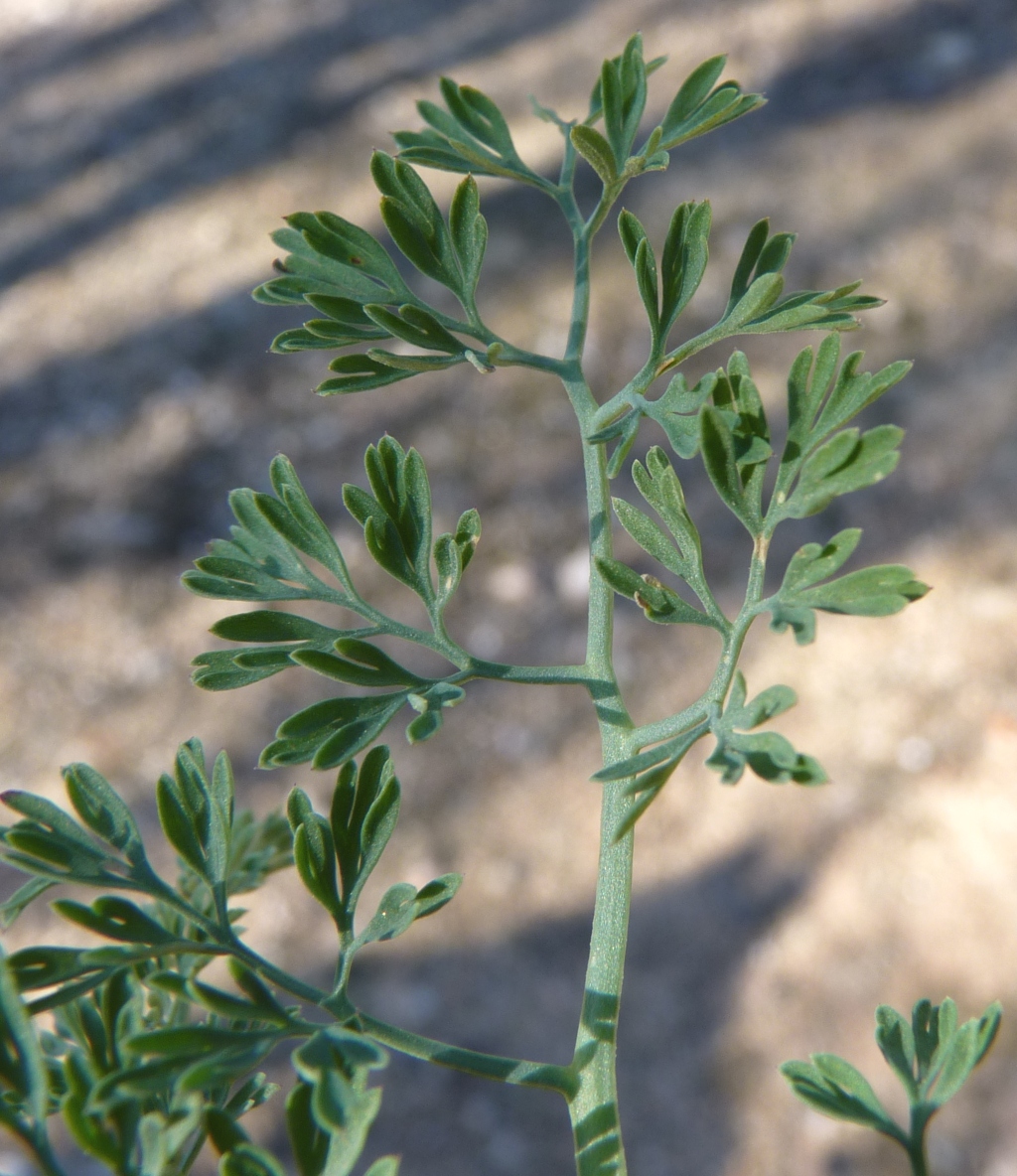Fumaria bastardii
Boreau Bastard's FumitoryWeakly ascending to erect herb. Largest ultimate segments of leaves to 5 mm long and 2 mm wide, rarely more. Raceme mostly much longer than the peduncle; bracts one-third to three-quarters as long as pedicels; pedicels rather thick, straight, remaining suberect; sepals ovate, 2–3 mm long, 1–2 mm wide, dentate, peltately attached; corolla 9–12 mm long, pink, the inner petals dark purplish at the apex with a yellowish central stripe; upper petal concolorous or rarely purplish at apex; lower petal commonly recurved, more than 0.5 mm wide medially. Fruit rounded at apex, squarish near base, 2–2.3 mm long and wide, keeled toward base, tuberculate and somewhat wrinkled when dry, with prominent apical pits. Flowers mostly Aug.–Nov.
LoM, MuM, Wim, GleP, VVP, VRiv, MSB, RobP, MuF, GipP, OtP, WaP, Gold, CVU, GGr, DunT, NIS, EGL, EGU, HSF, HNF, Strz. Naturalized all States except NT. Native to the Mediterranean region and western Europe. Common as a crop weed in irrigated areas, and on disturbed ground in damp, fairly fertile soils.
Flowers of shade forms are paler and may not exceed 7 mm in length, but the characteristic fruits enable identification.
Walsh, N.G. (1996). Fumariaceae. In: Walsh, N.G.; Entwisle, T.J., Flora of Victoria Vol. 3, Dicotyledons Winteraceae to Myrtaceae, pp. 73–78. Inkata Press, Melbourne.
 Spinning
Spinning




